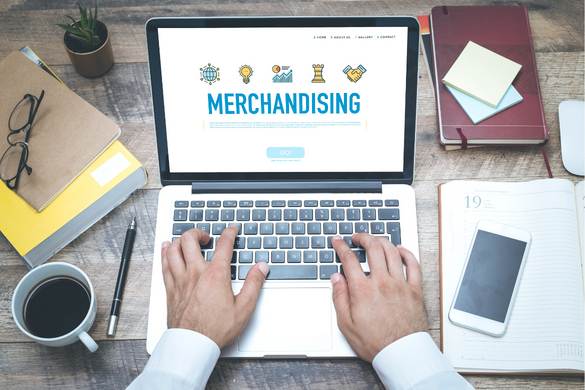Merchandising Secrets for Jewellery Retailers

Merchandising Secrets for Jewellery Retailers - Vikram Raizada
Merchandising is the single most important aspect of the retail mix. Merchandising helps jewellers or companies actually look deeply at their entire positioning. It is through merchandising that you finally take all knowledge about your brand and all learning about your consumer and use it.
Within the jewellery segment, merchandising involves everything from looking at what materials are available to you, understanding what your brand stands for, who your customer is, how she thinks, what she needs for what occasion, what trends she would like to see reflected in your brand, what price she is willing to pay, how she wants her purchase packaged, how and where she wants to be offered marketing communications. All this is within the contours of what merchandising is, but by no means does it end there – Merchandising is everything that helps you build your brand correctly and get you high sales and profits. Let me try to touch on a few merchandising essentials in the short space I have here.
Materials: Merchandising starts from the point of considering which materials are available to you. What is your product exactly? Within diamonds, for example, some companies work in only platinum, others in everything! You need to figure out what your brand’s positioning is and whom you want to reach out to? What are the demographics of your target audience?
Who you are, as a company?: Your basic product offerings need to be in-sync with who you are.
A bridal collection coming from a traditional company, for example, would need to have heavier and larger pieces, and that from a modern one would need to be lighter and more modern, with Indo-Western fusion. You need to use technology to lighten pieces in such a case.
If you’re merchandising for a designer, your bridal collection needs to have show-stopper pieces. Why would a customer go to a designer and buy a generic piece?
Knowing your consumer: Once you understand your basic product and brand positioning, the next tenet is really getting to know your customer – you need to know exactly whom you’re designing for. You can’t design for a generic target. As a merchandiser, you need a very pinpointed, targeted knowledge and understanding of your consumer. Only then can you create magic with your collections. What is the psychographic profile of your consumer? Too many marketers make the mistake of taking the wrong products to the wrong people.
Price positioning: To merchandise a product well, it has to also be priced absolutely appropriately for the shopper. So, your products need to be in-sync with what your target consumer wants and needs. Let’s go back to that modern company, coming up with a bridal collection – the look and feel you put together and the price will all have to be linked and married together perfectly. If you are a company with a traditional image, and your pieces are heavier and more traditional, your target audience and price positioning will also be different.
Staying on top of trends: Knowledge about fashion and trends is very important. You need to do continuous reading and researching to stay on top of trends. Consumers are on top of trends themselves today, so you’ll stand nowhere if you aren’t incorporating trends into your work. But, don’t copy. I like to use the coined word “Transcreate”. Is white metal, different diamond shades, or colours of gold coming in? Well, then create a collection around these trends – perhaps fusing with it traditional Indian work or whatever else goes with your brand image.
What does your customer want?: Once you’ve thought about who you are, understood who the customer is, you must also find out what the customer wants right now and for what occasion. Consumers rarely spell out what they want. They may not be overtly aware of what they want themselves! What a merchandiser needs to do after understanding and researching trends, is to brainstorm with consumers and ask them what they would like and what they think about certain ideas.
There’s a need to stop looking at merchandising only from the product’s eyes, and start looking at it from the consumers’ eyes. Find out what the perceived value of a product is, before jumping into production. All retailers have a natural test-marketing group within their regular customers. Products should be tested using their help. The proof of the pudding lies in the wearing, in our business – get customers to even take home and wear a few prototypes and see what feedback they give – what friends thought, etc. You can do that with very close, trusted customers. Also, make sure that your salespeople talk to customers about their preferences and convey this information back to you.
You need to use the right materials for the right occasion: In jewellery, the main categories are daily wear, occasion wear and bridal – always use appropriate materials. If you’re seeking to create a “gifting” collection, you would want to position the range from say Rs. 10,000 or 15,000 to about 50,000 and certainly not beyond Rs. 1 lakh. Again, looking to the consumer for feedback can help with these decisions.
Packaging: A merchandiser needs to understand how a product needs to be packaged and sold to a particular consumer. Some may say that this does not fall within the gamut of “merchandising”, but, if you don’t pay attention to it, and neglect it like many in fact do – you might pay a heavy price. Packaging should be appropriate for the product and brand too.
Appropriate promotional material and events: A merchandiser needs to come up with the right promotional material that gets the right target consumer at the right time and place, with the right message. Marketers of luxury products in India find that they are faced with a tough market. Indians pride themselves in being very smart shoppers, and chase value-for-money possibly like no other market. Create promotional events around the launch of each collection.
Keeping consumers coming into your stores: The only way you can keep consumers coming into your stores is by creating fresh collections. You need to engage them and create interest. Every collection should have new styles and staples. You can highlight the seasonal, but the foundation should be staples. Only if you have something new, can you get into advertising and promotion. As a retailer, it shouldn’t matter what a customer has bought – a sale is a sale – but one should think of ways of getting customers into the store. You have to create something new.
Deciding on budget allocations: Deciding what kind of budgets get allocated to the staples and seasonal is like a science in itself. We allocate budgets depending on the importance of the line from the sales perspective. From a merchandising standpoint, if you’re making for MTS (made to stock), then you need to make for the widest group of people you want to reach out to. A majority of the budget has to go with staples.
Don’t get into forecasting of sales: Forecasting how a seasonal collection will do is a very difficult thing. In fact, one cannot even properly gauge the impact of a collection after the collection is closed! What about the impact that the sales of one collection has on others? It’s not possible to gauge that. Customers may have been pulled into the store because of the seasonal pieces at the window, but ended up buying classic pieces. This happens all the time. If I’m looking at ROI of a line, I have to look at other sales also that took place during the running of that line.
Don’t obsess over competitors: I believe that knowing the competitor product-base is necessary, but only up to a point. If you drive your car while looking at how your neighbour is driving his, you’ll have an accident! You need to stay focused on your own driving. Most successful companies are focused inwards. Rather than looking at what technologies competitors are using, for example, look at what developments technology providers have been making. If you need to obsess over something, do so over your customer, or trends – not competition.
Learn from experiences and apply learning: If a product is not selling, for example, try to analyse and understand why that happened – was the price point wrong?; were the pieces too heavy? The good thing about jewellery is that in the worst scenario, if you have gone through all the usual steps like promotions and discounting for pieces that have not sold for say 6 months, you can redo the jewellery and re-merchandise right from the beginning. Yes, there might be a big cost involved, but it’s doable!
Make the product the Star!: In India, we focus too much on using Film stars for promotion of jewellery products. It’s time to make the product the hero! If the proposition is strong enough, it won’t be that hard. Look at brands like Cartier, Bulgari and Tiffany – They don’t use stars. One way we can emulate them is to create a signature look for every brand. Creating a signature look is not an easy task. You should think in depth about what the essence of the brand is and then capture it in some signature design, and then promote it. Of course there need to be other designs as well, but it helps if that signature look is also always there.
Ideas have to endure: Ideas have to endure. If you’re producing a collection that doesn’t have a life of more than 6 months there’s a problem. After all, jewellery is something that is worn for generations even.
Curation is another thing that will be a big thing of the future. We have to start learning how to curate for individual customers.
Above all else, remember – THERE HAS TO BE A HOOK. You must never stop working on new collections, even small ones – I would recommend at least 2 every year, but ideally 4.

